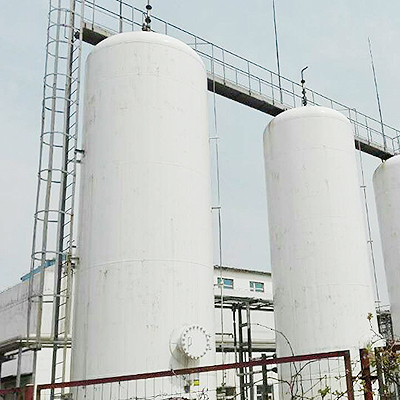The cold deformation reduces the toughness of the steel, and the strain aging deteriorates the low-temperature toughness, and the brittle transition temperature increases. Therefore, for large pressure vessels, the notch toughness must be emphasized when using, as in the production process, cold deformation, cold pressing, welding deformation, etc., will lead to embrittlement. Besides, low-temperature annealing should be implemented after cold deformation.
7. Stress state
Low-stress brittle fracture is closely related to stress state. When the pressure vessel has cracks or notches, it is easy to produce low-stress brittle fracture. And the sharper the crack or notch, the larger the pre-cracking size, the easier it is to cause a low-stress brittle fracture. When there are cracks in the welded joint and residual stress, the low-stress brittle fracture is more obvious.
Design principles to prevent low-stress brittleness
All current design specifications for cryogenic pressure vessels are based on the allowable stresses decided by the tensile strength at room temperature or yield strength. This method can effectively prevent the occurrence of large plastic deformation. In order to prevent low-stress brittle fracture of the pressure vessel designed according to this method at low temperatures, the steel must have a certain degree of toughness, and certain requirements are also placed on design and manufacture. How to determine the level of toughness required depends first and foremost on the principle of preventing brittle fracture.
1. Certain defects are allowed, but cracking must be prevented. In the weld zone, there are generally many defects and poor toughness. The fracture always starts from where defects and toughness are poor. Therefore, when this principle is adopted, it is not sufficient to simply measure the performance of the base material, and it is necessary to measure the properties of the heat affected zone and the weld line. The worst toughness should be able to withstand the strain generated by the external load.
2. It is allowed to have defects. Cracks may generate from the weld zone with poor toughness and the prevention of cracking extension and fracture mainly rely on the base materials. However, since the toughness of the weld metal, the weld line and the heat-affected zone is often worse than that of the base material, the crack tends to expand along the welded joint zone, so it is not reliable to prevent brittle fracture by this method.
3. Cracking from the defect is allowed since all parts of the pressure vessel can prevent cracking extension. This method seems to be the safest at first glance, but it has two drawbacks. First, the use of this method to prevent brittle fracture requires the use of very tough materials, which means that the cost of materials is very high; Second, its fatal flaw is that its validity as an absolute safety criterion is related to the type of structure.
The results of the blasting test on the defective pressure vessel show that it is easy to stop cracking under full hydraulic pressure. In the case of air pressure or hydraulic pressure with partial gas, because of the large energy stored in the system, it is difficult to stop the crack or it must be designed specifically for preventing further cracking extension.
For cryogenic pressure vessels in the petrochemical industry, the internal medium is often gas-liquid two-phase or liquid phase, but its working temperature is higher than its normal boiling point, so the principle of crack arrest cannot be used to prevent low-stress brittle fracture.
It can be seen that the most appropriate way to prevent brittle fractures for cryogenic pressure vessels is principle 1, which is to prevent cracking from the very beginning. This principle is currently applied to pressure vessel specifications in countries around the world.


 English
English Español
Español русский
русский